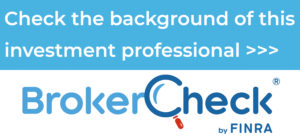HOME REFINANCE OPTIONS
We look at the major options for refinancing your mortgage, each with their own advantages and disadvantages.
THERE ARE SEVERAL COMPELLING REASONS FOR REFINANCING YOUR HOME MORTGAGE. INTEREST RATES MAY HAVE FALLEN, AND REFINANCING CAN PROVIDE YOU WITH THE OPPORTUNITY TO LOWER YOUR MONTHLY MORTGAGE PAYMENT.
Or perhaps you have substantial equity in your home and you need to access cash; refinancing allows you to take out some of the equity that you’ve already built up.
Whatever your reason, if you are considering refinancing, there are a few primary options, each with their own advantages and disadvantages. Below is an overview:
No cash-out refinance
The most common type of refinance is the no cash-out refinance. There are a number of reasons that you may look to pursue this option.
First, it may provide you with a lower mortgage rate. If interest rates have dropped significantly since you took out your existing mortgage, refinancing your unpaid balance could lower your monthly mortgage payment and the total amount of interest that you’ll pay over the course of the loan.
Second, you may find it advantageous to switch mortgage products. For instance, if your existing mortgage is an adjustable-rate mortgage and interest rates are spiking, you may find that you can secure a more predictable and lower monthly payment with a long-term fixed-rate mortgage.
Third, you may want to get rid of private mortgage insurance (PMI), which you can do if you’ve accumulated enough equity in your current loan.
Finally, you may decide to switch to a shorter loan term — 30-year to 15-year, for instance — thereby allowing you to build equity in your home more quickly. Keep in mind that shorter term mortgages typically carry higher monthly payments than longer term loans.
Cash-out refinance
If you want to take out money from your home’s appreciation and equity, consider a cash-out refinance. In this scenario, you’ll be refinancing your existing mortgage for a greater amount than your current balance, but getting a portion back in cash. Typically, you’ll incur a slightly higher mortgage rate with a cash-out refinance, as you’ll be borrowing more money.
Refinance considerations
If you’re refinancing into a 30-year home loan, you may be locking in lower rates and reduced monthly mortgage payments, but you’ve also just increased the length of time that you’ll be paying off your house (the point is moot if you intend to move prior to the loan term). If this is a concern, ask your lender to match your current loan term, setting up payments over the shorter period.
For instance, if you’re eight years into a 30-year mortgage and interest rates have fallen, you may want to refinance to a lower rate but not start another 30-year term. Ask your lender to set-up your payments over 22 years (the time remaining on your current loan) instead of 30. In this case, not only will you pay off your mortgage more quickly, but you will also reduce the amount of interest that you’ll pay during the loan.
Keep in mind that refinancing your home may also carry with it tax implications. Accordingly, you may find it helpful to consult a financial professional as you consider the process.
Thanks for checking out the blog.
Gregory Armstrong , CFP®
This material is for general information only and is not intended to provide specific advice or recommendations for any
individual. There is no assurance that the views or strategies discussed are suitable for all investors or will yield positive
outcomes. Investing involves risks including possible loss of principal.
This material was prepared by LPL Financial. Securities and advisory services offered through LPL Financial (LPL), a registered investment advisor and
broker-dealer (member FINRA/SIPC).
Insurance products are offered through LPL or its licensed affiliates. To the extent you are receiving investment advice from a separately registered independent investment advisor that is not an LPL Financial affiliate, please note LPL Financial makes no representation with respect to such entity.
Securities and insurance offered through LPL or its affiliates are: 









